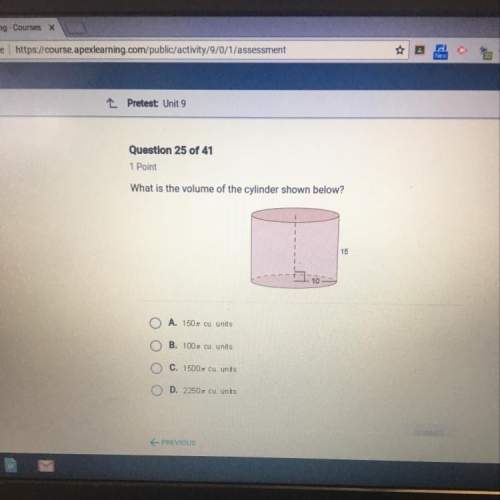
Mathematics, 06.04.2021 02:00 brad59
Occasionally, warning flares of the type contained in most automobile emergency kits fail to ignite. A consumer group wants to investigate a claim that the proportion of defective flares made by a particular manufacturer is higher than the advertised value of 0.10. A large number of flares will be tested, and the results will be used to decide between H0: p = .1 and Ha: p > .1, where p represents the proportion of defective flares made by this manufacturer. If H0 is rejected, charges of false advertising will be filed against the manufacturer.
1. Explain why the alternative hypothesis was chosen to be Ha: p > .1.
a. The alternative hypothesis was chosen because the true proportion of defective flares is more than .1.
b. The alternative hypothesis was chosen arbitrarily.
c. The alternative hypothesis was chosen to help with filing charges against the manufacturer.
d. The alternative hypothesis was chosen because people wanted to know whether the proportion of defective flares exceeds .1. No one would mind if the proportion of defective flares was less than .1.
2. In this context, describe a Type I error, and discuss the consequences.
a. A Type I error would be the conclusion that the proportion of defective flares exceeds 10% when, in fact, the proportion is 10% or less. The consequence of this decision would be the filing of charges of false advertising against the manufacturer, who is not guilty of such actions.
b. A Type I error would be the conclusion that the proportion of defective flares is 10% when, in reality, the proportion is in excess of 10%. The consequence of this decision would be the filing of charges of false advertising against the manufacturer, who is not guilty of such actions.
c. A Type I error would be the conclusion that the proportion of defective flares is 10% when, in reality, the proportion is in excess of 10%. The consequence of this decision is to allow the manufacturer who is guilty of false advertising to continue bilking the consumer.
d. A Type I error would be the conclusion that the proportion of defective flares exceeds 10% when, in fact, the proportion is 10% or less. The consequence of this decision is to allow the manufacturer who is guilty of false advertising to continue bilking the consumer.

Answers: 2
Another question on Mathematics

Mathematics, 21.06.2019 19:00
What are the first 4 terms in the multiplication pattern given by the formula 2×4n
Answers: 1

Mathematics, 21.06.2019 23:00
With these 5 geometry questions! pls 1.)quadrilateral abcd is inscribed in this circle.what is the measure of ∠a ? enter your answer in the box.°2.)quadrilateral abcd is inscribed in a circle.what is the measure of angle a? enter your answer in the box.m∠a= 3.)quadrilateral abcd is inscribed in this circle.what is the measure of angle b? enter your answer in the box.m∠b= °4.)quadrilateral abcd is inscribed in this circle.what is the measure of angle a? enter your answer in the box.°5.) quadrilateral abcd is inscribed in this circle.what is the measure of angle c? enter your answer in the box.°
Answers: 1

Mathematics, 21.06.2019 23:30
Write an inequality for this sentence the quotient of a number and -5 increased by 4 is at most 8
Answers: 1

Mathematics, 22.06.2019 00:50
Given: ab ≅ bc and ao ≅ oc ok − angle bisector of ∠boc find: m∠aok
Answers: 2
You know the right answer?
Occasionally, warning flares of the type contained in most automobile emergency kits fail to ignite....
Questions






Social Studies, 09.12.2021 03:10


History, 09.12.2021 03:10


SAT, 09.12.2021 03:10


SAT, 09.12.2021 03:10


Mathematics, 09.12.2021 03:10


Social Studies, 09.12.2021 03:10







